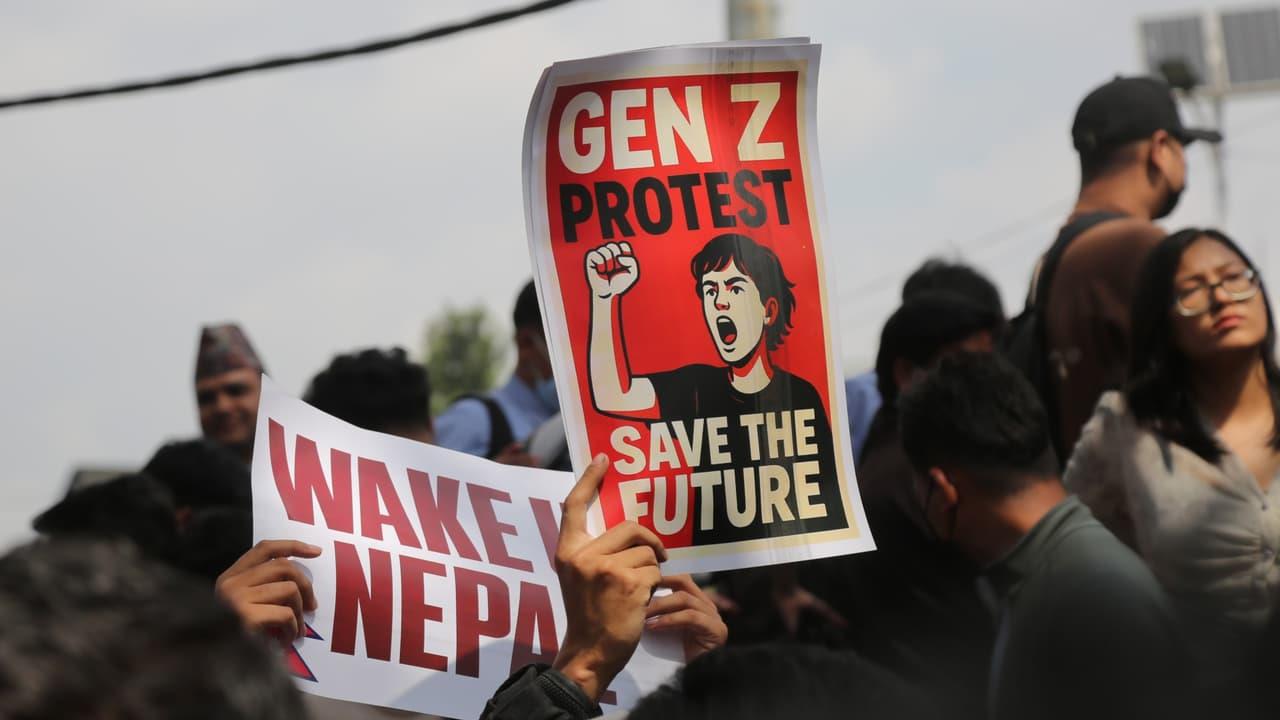Nepal Gen Z Protests: Is Social Media Ban The True Cause Of Unrest? Key Factors Explained
Nepal faces violent protests as young citizens clash with authorities over social media bans, corruption, and unemployment. The unrest reflects deep frustration with an out-of-touch ruling class and decades of slow economic and political progress.
Nepal is facing one of its most turbulent periods in recent years, with violent street protests erupting across the country. For many young Nepalis, the unrest is the culmination of years of frustration over unemployment, economic stagnation, and political corruption. While the immediate trigger was a government ban on social media, deeper systemic issues have pushed the nation's youth to the breaking point.
Nepali youth, digitally savvy but burdened by limited opportunities, are at the heart of the protests. Many feel disconnected from an elderly ruling class that they perceive as out of touch with the challenges facing the country.
Economic hardship has been a persistent issue. The World Bank reports that a staggering 82 percent of Nepal's workforce is in informal employment, far higher than global and regional averages. Remittances, which account for about a third of the country's GDP, play a vital role in sustaining households. However, reliance on these inflows has not created meaningful employment domestically, leaving many young people feeling trapped.
"With around 500,000 young people joining the workforce every year in Nepal, the urgency to create jobs that lift families out of poverty and drive sustainable development has never been more critical," said World Bank Vice President for South Asia, Johannes Zutt, following a recent visit.
Although Nepal's economy has shown some growth, with real GDP expanding by 4.9 percent in the first half of the 2025 financial year, many argue that progress has been slow and uneven. Young people, who make up 43 percent of the population, continue to struggle to find secure, meaningful work.
Corruption remains a significant factor behind public anger. Transparency International ranks Nepal 107 out of 180 countries, highlighting systemic governance challenges.
The excesses of the political elite have been starkly highlighted on social media. Viral videos show the children of politicians flaunting luxury goods and expensive vacations, contrasting sharply with the struggles of ordinary Nepalis.
Puja Manni, a 23-year-old Nepali woman who has worked abroad, observed: "The excesses of the ruling elite had been exposed through social media."
Since becoming a federal republic in 2008, Nepal has seen frequent changes in leadership. The revolving door of aging prime ministers and political horse-trading has fostered a perception that leaders are disconnected from the realities of daily life. Many young people feel left behind as opportunities for advancement remain limited.
The government's temporary ban on 26 social media platforms, including Facebook, WhatsApp, Instagram, YouTube, and Reddit, ignited widespread protests. While the ban was later lifted, it was perceived as a direct assault on fundamental freedoms.
Nepal's National Human Rights Commission noted that the restriction undermined "the spirit of democratic governance."
Santosh Sigdel of Digital Rights Nepal described the ban as a "slippery slope," while the Kathmandu Post editorialized that it "touched a raw nerve" with young people already frustrated by systemic failures.
"They use these platforms to vent pent-up frustrations, connect with friends, and keep abreast with the rest of the world," the newspaper wrote. The importance of social media as a tool for both information and social connection cannot be overstated, especially for the youth.
Underlying the protests is a generational divide between young citizens seeking progress and an older leadership that has long held power. The resignation of 73-year-old Prime Minister KP Sharma Oli did little to appease the protesters, who went on to set fire to parliament and other government buildings.
"They were already antsy, fed up with the country's woeful health and education systems, and rampant corruption and nepotism -- so much so that many of them saw no future in the country," noted observers.
For many young Nepalis, the unrest is a wake-up call, reflecting a demand for change, transparency, and opportunities that match their aspirations.
The violent unrest in Nepal is more than just a reaction to a temporary social media ban. It is the result of decades of unaddressed economic challenges, corruption, and political stagnation. With a young population eager for reform, Nepal's leaders face the pressing task of responding not just to immediate protests but to the systemic issues that continue to fuel public anger.
(With inputs from AFP)
Legal Disclaimer:
MENAFN provides the
information “as is” without warranty of any kind. We do not accept
any responsibility or liability for the accuracy, content, images,
videos, licenses, completeness, legality, or reliability of the information
contained in this article. If you have any complaints or copyright
issues related to this article, kindly contact the provider above.
Most popular stories
Market Research

- Japan Buy Now Pay Later Market Size To Surpass USD 145.5 Billion By 2033 CAGR Of 22.23%
- BTCC Summer Festival 2025 Unites Japan's Web3 Community
- GCL Subsidiary, 2Game Digital, Partners With Kucoin Pay To Accept Secure Crypto Payments In Real Time
- Smart Indoor Gardens Market Growth: Size, Trends, And Forecast 20252033
- Nutritional Bar Market Size To Expand At A CAGR Of 3.5% During 2025-2033
- Pluscapital Advisor Empowers Traders To Master Global Markets Around The Clock






















Comments
No comment